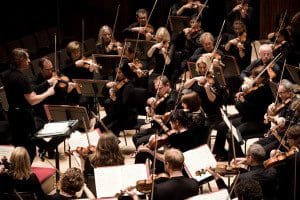
Of all my artistic influences, musical and otherwise, the most impactful has been Yoko Kanno’s soundtrack for the anime series “Cowboy Bebop.” At first listen, Kanno’s music is striking for its stylistic variety. Although jazz forms the core of the music, it branches out to blues, country, rock, heavy metal, and even late Romantic opera. Yet underpinning this seeming hodgepodge is a unified rhythmic sense. In every style, Kanno nurtures a rich ecology of rhythmic relationships. The music moves and flows in complementary streams, and that harmonious interpenetration resonates to the core of my musical aspirations.
In technical terms, what I’m feeling are its polyrhythmic grooves, the meaning those grooves create for surface syncopation, and the sheer energy all this movement generates. More artistically, this music affirms that, for me, movement is the soul of music, that music is first a corporeal — rather than merely aural or intellectual — experience, and that, because it increases awareness of both your physical existence and your interconnectedness, music is fundamentally a celebration of life, a religious experience.
Now “Cowboy Bebop” doesn’t have the only music in which I hear this textural richness. I’m attracted to it as well, for instance, in the music of Anton Bruckner, Elliott Carter, John Williams, Stevie Wonder, and, of course, J. S. Bach. But though I value that music, too, I always return to Kanno’s work as a touchstone for the feeling of life that I want my music to carry.

 2012 was a good year, but 2013 promises to be even more exciting.
2012 was a good year, but 2013 promises to be even more exciting.






